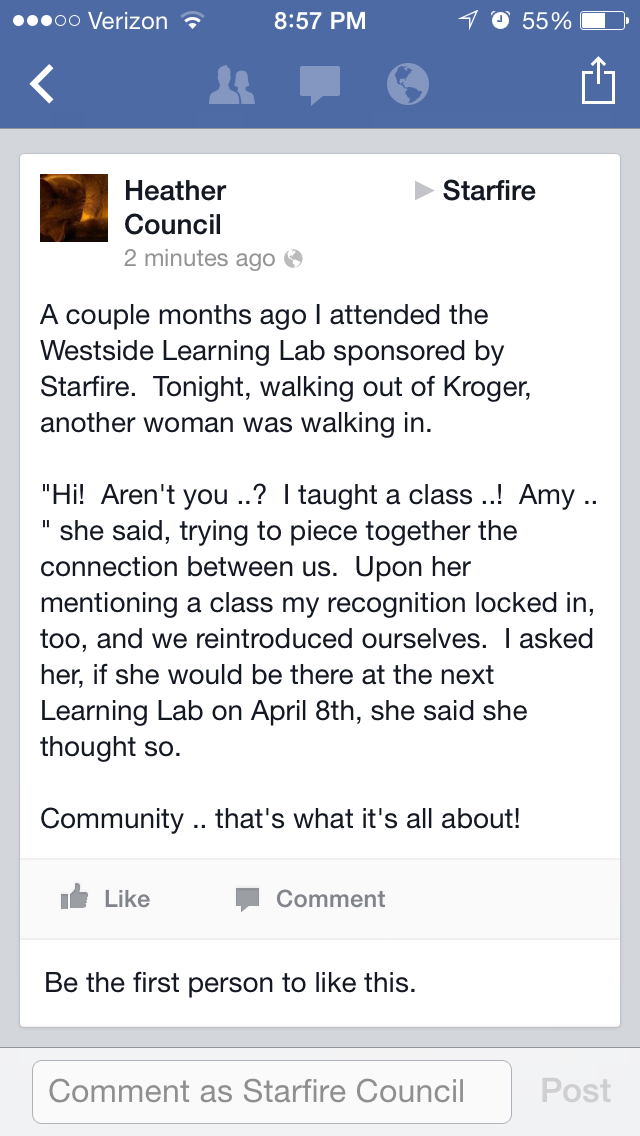The story Ben told was important. They made the trip up 75 North to Ikea. She’d recently moved into her own apartment, and as Ben described it, she had very little “things.” The apartment was barren, Ben recalled to us, no personality, and it didn’t look like someone had just moved in.
Sure, she had a bed and a few dishes that her staff’s agency likely provided, but other than the bare bone basics, her apartment didn’t have stuff. Ben mused aloud the difference between materialism and the needing things of one’s own, as if to justify going to Ikea with her. We all nodded, and I got what he meant. She didn’t have things, not like most of us do. She didn’t have the things that make a house a home– no artwork on the wall he said, no pictures of family and friends on side tables, no knickknacks of any sort to decorate the space. She did not have the kind of things that we tell stories about when people come over to our homes and remark “how interesting!” or “that’s darling!” about our things. She did not have things to tell interesting stories about in how they were acquired, where they came from, and what they mean.
So they went to Ikea, the place where people can spend hours daydreaming about how to change their drab space into cozy abodes with soft lighting, patterned comforters, throw pillows, and the kind of stuff that makes a house feel a little homier. Ikea is the place to go when you want to dream about the place you wish you lived in (and do so on the cheap). Stepping into any perfectly designed showroom, one can walk in and out of the types of moods you’d like your space to reflect. Edgy and modern? Shabby chic and all white? Cozy and homey? Ikea has it all laid out for you in aisles and aisles of fake living rooms, dining rooms, bedrooms, kitchens, offices and playrooms.
Ikea catalog bedroom
Ben continued that he wasn’t sure if it was okay that they’d spent some of the budget at Ikea, but she really enjoyed picking out things for her apartment, things that would be hers. Some Ikea artwork for the walls, he said, a clock. Most of us don’t think buying a $3.99 clock from Ikea to be a great memorable experience, but it was for her.
People hold on to things like gifts, and pictures, and antiques, and other heirlooms from family. They mean something, a connection to our roots, a tie to family members, a token of our belonging to each other. She, it was obvious to Ben, didn’t have those kinds of things. She didn’t have the precious kinds of belongings that tie her a belonging.
What the outside world would see as junk, things we would just as soon pitch in the weekly trash, she sees as hers. These are the things she can keep, things that have meaning, when not many things in her life do. An old foam beer koozie is sometimes worn as a bracelet, an inflatable alien toy from a carnival or festival she must have attended once decorates her neck sometimes, a cheap bracelet from a quarter bubble gum machine at a restaurant adorns her wrist, old RingPop rings are still worn as rings–the candy long gone, all treasured items that are hers, and hers alone. It’s clear that she doesn’t have much and never has, given what she clings to and carries with her.
In winter she’s been known to wear more clothing that necessary, likely because she grew up in a house frequently without heat, or in the type of situation that might bring eviction at any moment. Better to be ready and have your stuff with you, than to return home and see it sitting on the curb piled in trash bags waiting for collection.
What makes a house a home is more than just stuff. Looking around my house there’s a story attached to most of the items I have. The dresser that I use my husband and I found in Clifton. A couple was moving and didn’t have the space. As they carried it down the sidewalk, we asked if they were leaving it behind. They said, yes, unfortunately, they had no space in their new apartment. It was carved juniper wood with delicate scroll work and ornate brass handles. We took it giddily and it’s held my clothes for over seven years.
Dining Room
The credenza and hutch in the dining room belonged to my father’s grandmother. My mom used them for awhile until she replaced them with her own mother’s furniture. The mantle in my baby’s room was the original mantle in my grandmother’s house. The painting in the living room was done by my brother-in-law when he was a budding young artist in high school. His parents were giving it away when they sold their house. He’s now a professional painter and professor of painting at Tulane University. The billy balls and wheat sitting in the vase were from my wedding bouquet. Three years later they look the same and remind me of that beautiful day in October. There are pictures on the fridge and magnets holding up save-the-dates, sports’ schedules, birth announcements and thank you cards. The cedar trunk upstairs was a Christmas gift from my in-laws, and it holds afghans my grandmother and great-aunt made in the 70s, yellows, orange, and brown weaved together. On the bookshelf there is a large sample of my favorite books all of which I’ve read and meticulously never dog-eared; there are framed homemade artworks like the macabre birthday cards I made for my husband’s Halloween birthday, a stained glass window that someone gave me as a present, a picture of my grandmother the year she died and a picture of my sister at her high school graduation. Two guitars hang on the wall that my husband takes down nightly and strums.
Each item is ours and most have a story of how they came into our home. I know it’s all just “stuff” but it’s the stuff that’s important to me, and the kind of stuff that makes coming home comfortable and personal. It’s the kind of stuff Ben recognized she didn’t have.
So she has her first apartment that’s her own (as much as it can be her own when a sister is a roommate and there’s 24/7 staff of rotating people). Ben knew he couldn’t give her antique mantles connecting her to her family’s past, or photographs of her family and friends from wonderful vacations and parties past, or the possessions we all have that makes our spaces ours, but he could help her find a few items that she picked out herself, her own belongings, to put in a place, where perhaps one day, she’ll feel she belongs.




























